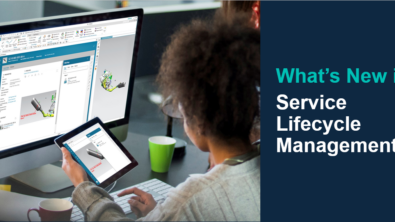Digitalization Strategies for Service Lifecycle Management (SLM)

This is the first in a seven part series where we will discuss our integrated SLM capabilities and the potential benefits that can be realized.
You may consider it “Asset Management”, “MRO”, or “Aftermarket Service” and you may call the “thing” you maintain a “Product”, “Asset”, or “Machine”. Also, you could be a manufacturer who is trying to increase your service revenue or an owner / operator trying to reduce your repair times. But to be successful the same metrics are critical, it’s about maximizing uptime, improving first-time-fixed rates, extending asset life, reducing turn-around times, minimizing inventory costs, and ultimately ensuring your customer’s satisfaction. Regardless of perspective, the common goal is how to streamline and optimize your overall approach in order to achieve the optimal processes that can deliver improvements to your key metrics. For many organizations there are still clear segmentation and disconnects between stakeholders which creates silos of data & processes leading to significant inefficiencies.

What has changed?
While high margins or excess capacity could serve to offset and hide sub-optimal processes in the past, this is no longer a realistic option for most. Manufacturers & Owner Operators are also facing additional pressure as they look to optimize their service operations and must adapt to achieve the necessary efficiencies and remain competitive. Do any of these sound familiar?
- Longer Asset Life is driving a need to effectively manage upgrades to aging assets and ensure the accuracy of ongoing spare part inventories.
- The Growth of IIoT & Analytics is generating an explosion of additional information to manage while trying to avoid new data silos and redundancies.
- Increasing complexity is creating a challenge to ensure ongoing quality & compliance throughout the service lifecycle.
- New Business Relationships are driving a need for flexible service solutions that can evolve with the business landscape.
What is your Strategy?
For many, the approach to optimizing their service operations is focused on building out a predictive maintenance strategy that leverages IoT data & analytical models. However, without also considering the accuracy of the physical asset configuration there is a potential for misleading results. This could be due to an anomaly caused by an approved deviation that has not been properly considered in the analytical model. Additionally, while the analytics will help in understanding when service is required it does not address existing inefficiencies in planning & optimizing the actual service tasks. For example…
- Can you quickly and accurately disposition and implement required changes to ensure all stakeholders are notified & prepared in a timely manner?
- Do you a have a clear understanding of the service requirements for your assets to accurately plan & forecast?
- Can you retrieve accurate data, configuration, and history details for your fielded assets?
- Can you propose or plan an asset upgrade with the confidence that it will work with a specific fielded configuration?
- Can you provide timely, accurate, and intuitive instructions to correct the identified issue the first time?
- Are you able to accurately manage & optimize your spare parts inventory by leveraging accurate knowledge of your fielded assets?
Our SLM Strategy
Our approach focuses on delivering a truly comprehensive Digital Twin that accurately manages physical asset configuration details and provides capabilities to properly contextualize all required data. Additionally, these asset configurations are linked and continually validated against the available specifications to ensure quality & compliance. This allows for maximum reuse of all available asset data and whether it’s utilization, analytical models, service requirements, instructions, etc., to have full traceability and history across the various stakeholders.

As we continue through this series, we will discuss the various capabilities in more detail and how our SLM framework can be leveraged to manage all the data and processes required to deliver on desired improvements.

Look for part two in the series coming soon where we will discuss the upstream & downstream advantages of managing an integrated Service Bill of Material (sBOM).
![Optimize Service Lifecycle Management with integrated solutions [video]](https://blogs.stage.sw.siemens.com/wp-content/uploads/sites/40/2024/04/vlcsnap-2024-04-16-19h41m23s985-395x222.png)

